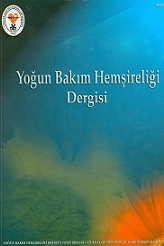Enjektörün Hatalı Kullanımı ve Güvenli Enjektörler
Enjektör, güvenli enjektör, enjeksiyon güvenliği, güvenli olmayan enjeksiyon
Syringe, safety syringe, injection safety, unsafe injection,
___
- endoscopy clinic in Las Vegas- Nevada
- –2008. Clin Infect Dis 2010;51(3):267-73. 10. Labus B, Armour P, Middaugh J, Rowley P
- Sands L, Sizemore J, (Southern Nevada
- Health District Outbreak Investigation Team).
- Outbreak of Hepatitis C at Outpatient Surgical
- Centers Public Health Investigation Report.
- Las Vegas, Nevada. 2009 http://www.south
- ernnevadahealthdistrict.org/download/out
- breaks/final-hepc-investigation-report.pdf
- Erişim: 07.07.2014 11. Hutin YJ. Injections given in healthcare set
- tings as a major source of acute hepatitis B in
- Moldova. Int J Epidemiol 1999;28(4):782-6. 12. Simonsen L, Kane A, Lloyd J, Zaffran M, Kane
- M. Unsafe injections in the developing world
- and transmission of bloodborne pathogens: a
- review. Bull World Health Organ 1999
- (10):789-800. 13. Pandit NB, Choudhary SK. Unsafe injection
- practices in Gujarat, India. Singapore Med J.
- 49 (11): 936-9. 14. Perz JF, Thompson ND, Schaefer MK, Patel
- PR. US Outbreak Investigations Highlight the
- Need for Safe Injection Practices and Basic
- Infection Control. Clin Liver Dis 2010;14(1): 137-51; x. 15. Pugliese G, Gosnell C, Bartley JM, Robinson
- S. Injection practices among clinicians in
- United States health care settings. Am J In
- fect Control 2010;38(10):789-98. 16. Williams IT, Perz JF, Bell BP. Viral hepatitis
- transmission in ambulatory health care set
- tings. Clin Infect Dis 2004;38(11):1592-8. 17. Kane A, Lloyd J, Zaffran M, Simonsen L, Kane
- M. Transmission of hepatitis B, hepatitis C and
- human immunodeficiency viruses through un
- safe injections in the developing world: model
- based regional estimates. Bull World Health
- Organ 1999;77(10):801-7. 18. DSÖ, Best Practices for injections and related
- procedures toolkit. 2010. http://whqlibdoc.who.
- int/publications/2010/9789241599252_eng.pdf
- Erişim: 07.07.2014 19. Alter MJ. Healthcare should not be a vehicle for transmission of hepatitis C virus. J Hepatol
- 48(1):2-4. 20. Wilson WO. Infection control issue: Under
- standing and addressing the prevalence of un
- safe injection practices in healthcare. AANA J
- 76(4):251-3. 21. Schaefer MK, Shehab N, Perz JF. Calling it
- multidose doesn’t make it so: Inappropriate
- sharing and contamination of parenteral med
- ication vials. Am J Infect Control 2010; 38(7):580-1. 22. Macedo de Oliveira A, White KL, Leschinsky
- DP, Beecham BD, Vogt TM, Moolenaar RL, et
- al. An outbreak of hepatitis C virus infections
- among outpatients at a hematology/oncology
- clinic. Ann Intern Med 2005;142(11):898-902. 23. Trépanier CA1, Lessard MR, Brochu JG, De
- nault PH. Risk of cross infection related to the
- multiple use of disposable syringes. Can J
- Anaesth 1990;37(2):156-9. 24. CDC and the Safe Injection Practices Coali
- tion (SIPC). The One & Only Campaign. http://
- www.oneandonlycampaign.org/.
- Erişim Tarihi:12.076.2014. 25. Perry AG. Potter PA. Klinik Uygulama Becer
- ileri ve Yöntemleri. Aştı TA, Karadağ A, ed
- itörler. Adana: Nobel Kitapevi Yayın Dağıtım
- ve Pazarlama Ltd.Şti.; 2011. p.609, 693-707. 26. Taylor C, Lillis C, LeMone P, Lynn P. Skill
- Checklists for Fundamentals of nursing: The
- art and science of nursing care. 7thed.
- Philadelphia, USD: Lippincott, Williams &
- Wilkins; 2011 (Skill 29-4). 27. White L. Foundations of Basic Nursing. 2nded.
- USA. Thomson Delmar Learning. p.420.
- ISBN: 140182692X, 9781401826925. 28. Rice J. Medications & Mathematics for the
- Nurse. 9thed. Albany, NY: Delmar Publishers; 2002. p.162. 29. Blogg CE, Ramsay MAE, Jarvis JD. Infection
- Hazard From Syringes. Br J Anaesth 1974; 46(4):260-2. 30. Pervecal A. Consequence of syringe-plunger contamination. Med J Aust 1980;1(10):487-9. 31. Huey WY, Newton DW, Augustine SC, Ve- jraska, Mitrano FP. Microbial contamination potential of sterile disposable plastic syringes.
- Am J Hosp Pharm 1985;42(1):102-5. 32. Olivier LC, Kendoff D, Wolfhard U, Nast-Kolb
- D, Yazıcı MN, Eschey H. Modified syringe de
- sign prevents plunger-related contamination
- results of contamination and flow-rate tests. J
- Hosp Infect 2003;53(2):140-3. 33. Favier B, Gilles L, Latour JF, Desage M, Gi
- ammarile F. Contamination of syringe plun- gers during the sampling of cyclophosphamide solutions. J Oncol Pharm Pract 2005;11:(1)1- 5. 34. Kiffmeyer TK. Comparative Study of Syringe
- Contamination by Hazardous Drugs. 2009
- http://www.equashield.com/pdf/article.pdf
- Erişim Tarihi: 20.01.2013 35. Gürel E. Sağlık profesyonellerinin aseptik
- teknik açısından güvenli enjeksiyonlara yöne
- lik uygulama ve gözlemlerinin belirlenmesi.
- Marmara Üniversitesi Sağlık Bilimleri En
- stitüsü Yüksek Lisans Tezi, İstanbul, 2013. 36. Hersh BS, Carr RM, Fitzner J, Goodman TS
- Mayers GF, Everts H, et al. Ensuring Injection
- Safety during Measles Immunization Cam
- paigns: More than Auto‐Disable Syringes and
- Safety Boxes. J Infect Dis 2003;87(1):299- 306. 37. Safety of Injections: WHO-UNICEF-UNFPA
- Joint Statement on the Use of Auto-Disable
- Syringes in Immunization Services. http://
- www.who.int/injection_safety/toolbox/en/ Bundling.pdf
- Erişim: 10.07.2014 38. Altaf A. Injection Safety in Pakistan: Auto Dis
- able (AD) Syringes in the Curative Sector.
- JPMA 2003;53(11):510.
- ISSN: 1302-0498
- Başlangıç: 1997
- Yayıncı: Yoğun Bakım Hemşireler Derneği
Kültürlerarası Hemşirelik Kavramının Yoğun Bakıma Yansımaları
Eylem TOPBAŞ, Hakan BAY, Buğra Burak TURAN, Ahmet Hüdai EMİR, Umut ÇITLAK
Çocuk Yoğun Bakım Ünitelerinde Kanıta Dayalı Uygulamalar
Gülzade UYSAL, Duygu Sönmez DÜZKAYA
Enjektörün Hatalı Kullanımı ve Güvenli Enjektörler
Çoklu Organ Yetmezliğinde Hemşirelik Bakımı: Bir Olgu Sunumu
Uyku Hijyeni Eğitiminin Koroner Yoğun Bakım Sonrası Hastaların Uyku Kalitesine Etkisi
Fatma Tok YILDIZ, Hatice Tel AYDIN
